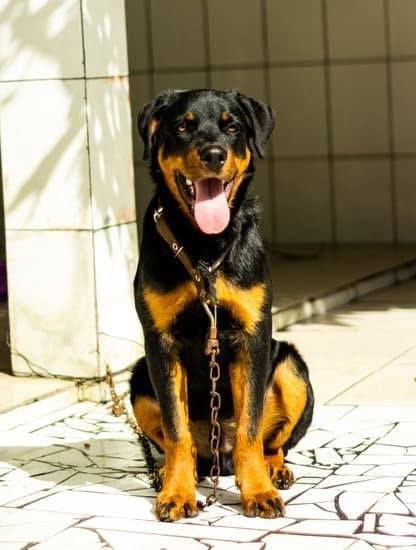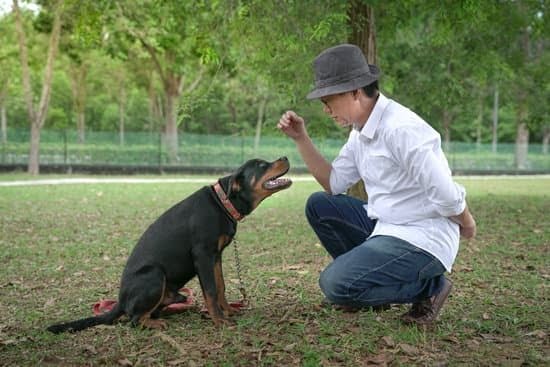Introduction
Training your dog to watch you is one of the most significant steps in creating a strong bond between you and your beloved pet. This simple skill helps to build trust, communication, and teaches your pup critical obedience skills which can help to prevent dangerous and potentially life-threatening situations. When training your pup to watch you it is important to keep calm, remain consistent with commands, provide reinforcement, and stay patient during the entire process.
In addition to building a stronger relationship with man’s best friend, teaching your dog to watch you can also help establish boundaries as well as prevent your pup from running off or engaging in unsafe behavior while outdoors. This type of training also helps dogs understand their place in their pack i.e. the family unit which ultimately leads to better general obedience when needed since it communicates the position of the “alpha.” Lastly, this training can be used as an essential tool for rescue organizations to help make near-immediate adjustments for dogs being introduced into new homes.
By effectively employing the proper techniques and providing positive reinforcement throughout the entire process, owners will quickly start seeing amazing results with their canine companions when it comes time for them to “watch” during daily activities or outings!
Establishing the Basics
Dog training is an important part of helping your pup learn how to obey you and become a well-behaved family member. Training a dog can be divided into three stages: the foundation stage, development stage, and perfection stage. Each stage has its own methods, techniques, and goals to help your pup master essential cues such as “watch me”.
The Foundation Stage: The foundation stage is where foundational skills are laid down that will form the base for more advanced behaviors. This could include teaching basic obedience commands such as come, sit, stay, down, leave it etc. Rewards are often used in this phase for positive reinforcement helping create a connection between desired behavior and reward. This helps create a strong bond between pet and owner while also letting them know what kind of behaviors result in rewards. Setting achievable goals during this stage is also important so that owners can track their dog’s progress while also motivating them to continue striving towards honing desirable canine qualities.
The Development Stage: Once the foundation behaviors have been established it’s time to move onto the development phase where those basics are built upon by introducing more specific instructions like “look at me” or “watch me”. Here owners set clear expectations regarding their expectations on how they want their pup to behave alongside other people or animals but without overwhelming them with too much information at once as this could easily backfire leaving the pup confused about what behavior is appropriate/desired from them. This phase takes patience and consistency ensuring that your dog is familiar with all corrections leading up to perfection being reached within this phase which should include easy access of corrective action by verbal cues such as “leave it” rather than physical corrections such as pushing away when reaching for objects off limits like shoes or food items .
The Perfection Stage: After the basics have been laid out within the foundation stage and developed within the development stage it’s time to move onto perfecting those two stages by working habits associated with these basic behaviors existing within various environments whether they be indoors or outdoors setting up situations like coming when called when around strangers only elevating levels of difficulty every time task becomes easier/ common place so that pet will remain encouraged/motivated further ahead within training process therefore continuing building on previous successes along way allowing final stages of process easier completion with minimum resistance displayed by pet population who always want understanding owners!
Getting Started
To successfully train your dog to watch you, there are a few supplies you’ll need and some basic rules to follow. The environment must also be suitable for teaching your dog this skill.
For the necessary supplies, you’ll want to make sure that you have treats handy. These should be highly motivating snacks that will incentivize your dog to focus on you and watch your commands. You may likewise benefit from using a clicker in order to reinforce desired behaviors with a unique sound — this way, your pup will know it’s being praised and can better associate certain acts with reward. A well-suited training collar (preferably one without prongs) and leash are also needed items so that you can ensure maximum control over the situation.
Creating an appropriate environment is just as important when it comes to training exercises like these. Your space should provide enough headroom and area around beds, sofas, and other furniture in order for your pup to move freely. Additionally, the atmosphere should be calm and free of distractions such as children playing or loud noises that may disturb their concentration on the task at hand. Consistent reinforcement utilizing treats is recommended for making any progress in this learning process since rewards greatly help keep their attention focused on yourself as the teacher instead of something else in the environment!
Understanding Dog Signals
In order to effectively train your dog to watch you, it is important to understand their body language and the kinds of sounds that they make. Dogs are incredibly intuitive animals, however, humans must train themselves in order to correctly interpret those signals. To begin interpreting these signals, look for any slight changes in your dog’s behavior that would indicate distress or excitement. Common signs can include an erect body posture, quick imperceptible licking of lips, ears pricked up pointing forward signaling heightened attention, barking or whining that’s not a part of normal everyday activity, or furrowed eyebrows.
When you recognize these signs of stress or excitement in your dog, it is important that you hone in on what is triggering the response so that you can better respond to it. During this time period, make sure to remain consistent with body language and speaking tone while communicating with your pet. By paying close attention and remaining consistent in how you react to certain behaviors, you are establishing trust between yourself and your pet which ultimately enables successful training techniques. Additionally, it will be more likely that your dog will watch and understand both verbal and non-verbal commands from you. Beyond the basic body language translations for humans understanding dog signals like barks or whining are important for good communication as well. With sufficient practice owners can even start reading vocalizations like higher pitched whines signaling fear vs lower pitch whines indicating general unhappiness or contentment; this kind of communication will help enhance relationships between owners and pets while enabling more effective training efforts moving forward.
Establishing a Sense of Focus
To begin training your dog to watch you, it is important for you to create an environment that encourages focus and retention. This means providing appropriate rewards for correct behavior and responding quickly to undesired behaviors. You can do this by employing positive reinforcement-based training methods such as verbal praise, small treats, or clicker training. Additionally, try to limit distractions. Have your dog in a quiet area where he has limited access to people and other animals. This will allow him to focus on the task at hand: watching you. Create short training sessions of around 5 minutes at a time—a few minutes of focused training is better than a long session with too many distractions. Lastly, be sure to always end the session on a high note while your pup is still engaged in what he’s learning—this will encourage him to come back next time with enthusiasm!
Teaching Your Dog to Watch
To train your dog to watch you, the first step is to implement consistent commands. Instead of using different words to mean the same action each time, it’s important to choose one command and one signal for a particular action. For instance, if you want your dog to come when called, use the word “come” and a clapping signal each time. Then, whenever you say that word or give that signal, your pup should understand what it means.
You need to add consistency when training your pup to watch you as well. It’s important to remain in the same spot each time you give a command and your dog should also know that they need look towards you when they hear it. You can start by standing in front of them facing away while giving the command and then patting their head or giving them treats when they display the desired behavior – staring straight into your eyes or turning their head towards you on queue. As with all training, patience and repetition are key for successful results! Additionally, it can be helpful to have someone else there initially so that they can reward the dog for obeying them as well; this will further cement the idea that watching ‘the boss’ is an important behavior in their eyes.
Building Habits
In order for your dog to learn the concepts involved in learning how to watch you, it is important that you create an environment that is conducive to learning. This begins with building habits, and it is important that you make sure your dog knows what behaviors will be rewarded. You should always reward and praise when appropriate, and avoid punishing or scolding when they do not behave as desired. This will help them form positive associations with watching you. Additionally, make sure to establish a good routine of devoted training sessions; these should be kept consistent so that they are aware of what is expected of them. Find the right rewards for your dog; treats might work best, but find whatever motivates them most and use those items during training. Finally, it is important that you remain patient and encouraging throughout the process; this will ensure that your dog does not become overwhelmed or discouraged. With proper guidance and motivation, your pup can learn how to watch you effectively in no time!
Making Yourself the Focus
Positional Playtime is an excellent way to get your dog to focus on you. This simple game involves rewarding your pup for responding promptly when you request a different physical position such as sit, down, stand or roll over. Every time your pup complies with the direction and position you want them in, reward them with a treat and verbal praise so that they know they’re being good and that it’s fun to listen to you! This game will help to reinforce the idea of ‘being on command’ while also having fun. You can increase the difficulty level of this game by adding distractions like people walking by or noises from outside. Doing so will help further engage your pup and really build their focus skills for following commands later on.
Maintaining Positive Results
Positive results depend on consistency. Training a dog to watch you works best when the commands are reinforced multiple times in quick succession. After giving an instruction, it is important to monitor the dog’s behavior and provide a reward if they responded appropriately. During this time, it is also important to make sure that other distractions do not interfere with your training by minimizing them as much as possible. Closely monitoring the dog allows you to quickly modify negative behaviors or reinforce positive ones. If your dog fails to obey an instruction or begins exhibiting undesirable behaviors like barking or jumping up after being rewarded, it is essential that the bad behavior be corrected quickly. This can include implementing more consistent rewards for desired behaviors or increasing periods of non-rewarding social praise such as petting and verbal encouragement when undesired behavior occurs. Utilizing these techniques consistently during each training session will help build a strong connection between you and your pup, ultimately increasing the success of learning how to watch you more reliably over time.
Conclusion
Training your dog to watch you is an important part of creating a bond between you and them. As your furry friend gets better at this skill, they will be able to respond more purposefully when you greet them or call their name. Eventually, after working through different training strategies and the occasional treat, both of you will reap the rewards of a healthy relationship.
When your pup has mastered the art of watching you, it can become a fun game for both of you. Taking turns in seeing who can break focus first can become an interesting way to enjoy time together while also strengthening your bond. Training is not only beneficial in teaching your pup obedience but also works as a great conversation starter and provides an exciting new activity every time. As you come to understand each other’s learning style more and more, it will become easier to train them and make learning even more enjoyable for both of you. With repetition, persistence, and treats on hand, teaching your pup to watch you can be made into an exciting journey full of reward-filled accomplishments along the way! Ultimately, the joys that come from such bonding experiences are priceless as you develop a deeper connection with your loving companion.

Welcome to the blog! I am a professional dog trainer and have been working with dogs for many years. In this blog, I will be discussing various topics related to dog training, including tips, tricks, and advice. I hope you find this information helpful and informative. Thanks for reading!





